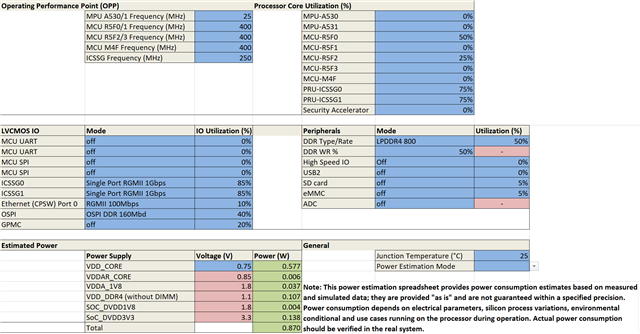Hi,
I am planning to use AM2434BSDGHIALVR for my new project.
Kindly help me resolve the below queries.
- Is it possible to reduce the power consumption up to a level of 0.5W with two 1G ethernet active?
- We need to use two 1G ethernet with PROFINET. What are the major things we need to take care in Hardware/Firmware?
- What should be the minimum MCU clock frequency to achieve the proper 1G ethernet communication
- Will there heat sink required for AM2434BSDGHIALVR when the active peripherals are only
1) Two RGMII with profinet
2) DDR4
3) Boot Flash
Thanks in advance
Melbin


